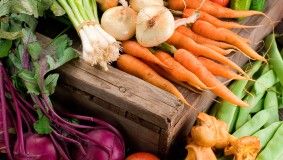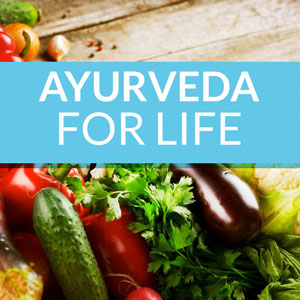What You Don't Know About Kale, But Should!
Kale: The Ayurvedic Perspective
When you choose kale you probably feel that you are making an ultimately healthy choice. Kale packs the punch when it comes to benefits, and has done so for 2,000 years.
Kale is known as one of the earliest vegetables cultivated by man. It was a hit among ancient Greeks and Romans as much as it is now in farm to table restaurants. Yes, you are eating the same food as Julius Caesar. (Take that friends that try to argue kale’s recent time in the limelight.) Early settlers from the British Isles brought kale and collards to America, probably in the late 1600s. In the nineteenth century, Scotland Kail was used as a common term for dinner and many Scottish kitchens featured a Kail Pot.
We keep turning to this vibrant vegetable to nutrition and taste (if you know how to prepare it well).
Here are some great reasons to love Kale:
- It’s a natural blood purification which helps to maintain a human’s natural alkaline state.
- It’s packed with fiber that aids in removing toxins and improving digestion.
- It’s high in calcium, magnesium, iron, potassium, zinc, and vitamin A, C, E & K (America’s new vowels). This means, better vision, great immunity, glowing skin and strong bones.
- The nutrients help reduce unhealthy cravings.
- It’s strength powers help to fight cancer.
- It lifts the spirits.
Eating veggies never sounded so empowering! So how can this be translated in the Ayurvedic world to best suit the doshas?
Kale has bitter and astringent qualities. These qualities help to detox and lighten the body and what better time to do that then spring, or Kapha season. While kale is best for Pitta and Kapha individuals, when used right, Vatas can benefit from this nutrient-packed plant.
If you are a Vata, cook kale until leaves are soft and easy to break down. Sautéing in a pan will help add moisture. Adding spices such as cumin, black pepper, or ginger, will help the digestion process. Cooking the veggie in ghee or coconut oil will allow for easier absorption through the body. It’s best to serve kale warm, but if that is unattainable, massaging your kale is the next best step. Eating raw kale or dried kale chips can aggravate Vatas already dry qualities and be harder for the body to break down, causing the body to become hmm… gassy. The good ole’ who-done-it.
While Pitta types can digest kale, they do benefit from it being lightly steamed. It’s best to use minimal salt and cook the veggie in ghee or coconut oil. Maybe add to kale’s cooling effect by throwing some coconut flakes on it. Go wild!
When it comes to Kaphas and kale, they’ve totally got this. Kapha individuals can juice, sauté and occasionally even bake kale. However, it is best to minize the use of ghee or too much oil. Try not to overuse salt either.
While those are just suggestions based on doshas, your body will know what it can handle. It’s good to note that kale is a member of the Brassica oleracea family, which also includes cabbage, broccoli, cauliflower and brussel sprouts. While beneficial, this family has a tendency to cause flatulence or bloating due to the significant amount of raffinose – an indigestible sugar which humans don’t have the proper enzymes to break down. Kale is also packed with fiber which can increase the movement of waste in the digestive tract leading to diarrhea. You’ve been warned.
Kale crops are often sprayed with pesticides so its best to buy organic. In all cases wash the veggies to remove any surface chemicals. To keep things on the softer side cut out the center stem and then slice the leaves into small strips. Cook to your liking (or dosha!)
Happy Belly Kale Salad:
I used to consider kale hard to digest for my belly but once I learned how to make it properly it is one of my favorite things. It’s a fantastic source of vitamins and minerals and tastes great in various dishes!
Serves 2
Ingredients
- 4 handfuls of kale
- 1 avocado
- 1/4 cup pine nuts or sunflower seeds
- 1 diced and sauteed onion
- 1 large grated carrot
- 1/2 cup cooked quinoa
- 1 tablespoon olive oil
- a handful of goji berries (optional)
Dressing
- 2 tablespoons tahini
- juice of 1 lime
- 2 tablespoons apple cider vinegar
- 1 tablespoon tamari (optional)
- 1/2 teaspoon chipotle powder
- Water until the desired consistency is reached
Method
Add all the ingredients for the dressing except the water to a small bowl and season with salt and pepper. Stir until combined before adding a tablespoon of water at a time until you get the right consistency. Remember you still want it to maintain a fairly thick consistency to keep the salad nice and creamy. I recommend adding roughly 2 tablespoons.Add the kale to a mixing bowl removing any large stalks and pour the dressing over. Then using your hands (by far the best way to break down the kale) rub the dressing into it, squeezing it so it breaks down and becomes easier to eat. Massaging kale helps to break it down and make it easier to digest.
Chop the avocado into bite size pieces and add to the salad along with sauteed onions, cooked quinoa, goji berries, pine nuts or sunflower seeds, and grated carrot. Toss the whole thing and enjoy!
Your turn: what have you noticed when you eat kale? What is your favorite way to enjoy kale?











